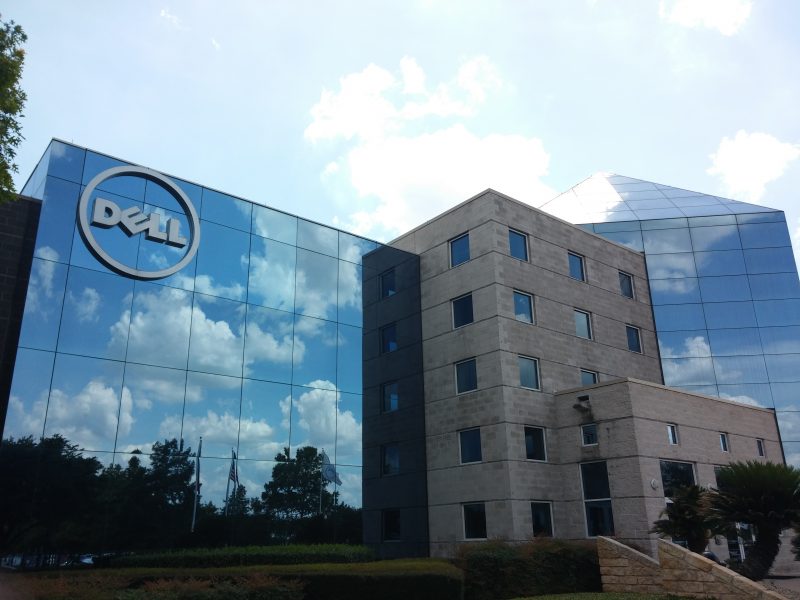 INFRA
INFRA
 INFRA
INFRA
 INFRA
INFRA
Dell Technologies Inc. is upgrading its portfolio of hyperconverged infrastructure systems with faster servers that use latest-generation Intel Corp. silicon, as well as an enhanced version of Microsoft Corp.’s Azure Stack platform.
Dell announced the updates against the backdrop of Microsoft’s Ignite 2021 event today, where the cloud giant debuted a number of improvements for Azure Stack.
Hyperconverged infrastructure is the umbrella term for data center systems that combine compute, storage and networking gear in a single chassis along with necessary management software. The fact that everything arrives in one integrated package makes hardware setup easier than when the components are provided separately. Hyperconverged infrastructure systems can also be easier to maintain after they are deployed.
Dell’s newly upgraded hyperconverged portfolio consists of three main product lines. The first, Dell EMC VxRail, comprises systems that use VMware Inc.’s virtualization software to run applications. The second product line is called Dell EMC PowerFlex and supports other software options besides VMware technology. The third element of Dell’s hyperconverged infrastructure portfolio is the Dell EMC Azure Stack HCI series, which allows customers to deploy on-premises versions of services from Microsoft’s Azure public cloud.
Dell is refreshing all three product lines by upgrading them to its latest-generation PowerEdge servers. The new PowerEdge servers, in turn, run on the third-generation Xeon central processing units that Intel debuted earlier this year, which bring significant performance improvements. Compared with previous Xeon chips, the new CPUs provide an up to 20% increase in the number of instructions per clock cycle, a key measure of performance.
The new CPUs’ increased speed is partly the result of the fact that Intel makes them using its most advanced 10-nanometer manufacturing process. Another major selling point is that the new chips make it possible to build servers with higher memory bandwidth than before.
Memory bandwidth is a metric that measures how fast data can travel between a server’s CPU and RAM. It directly influences the performance of enterprise applications, particularly workloads such as machine learning algorithms that process significant amounts of data. The more data an application processes, the more often it has to access the underlying servers’ RAM, which makes memory bandwidth a bigger factor in the speed of computations.
“The increase in performance and bandwidth is remarkable – up to 36% more cores than 2nd Gen Xeon processors and 20% more memory bandwidth for our platforms with Intel Optane Memory and significant cost savings versus traditional DRAM,” detailed Nancy Hurley, Dell’s Senior Manager of CI/HCI Product Marketing. “Higher core density and better memory performance translate into HCI platforms that can address more resource intensive workloads like databases, analytics, and AI/ML apps effortlessly.”
In conjunction, Dell is refreshing the software of its Azure Stack HCI hyperconverged product series. Systems in the series ship with Microsoft’s Azure Stack platform, which enables companies to create a miniature on-premises version of the Azure public cloud. Over the coming months, Dell will roll out support for the latest version of the platform, which brings several major security enhancements.
Microsoft has added in a set of technologies called Secured-core to help organizations fend off cyberattacks. Secured-core includes Dynamic Root of Trust of Measurement, a feature that checks key parts of a server’s firmware for tempering every time the machine boots. Another capability, virtualization-based security, runs some of the software components that a server uses to detect potential breaches and vulnerabilities in an isolated section of the onboard memory. Isolating the components makes them more difficult for hackers to disable.
The new features are partly designed to block cyberattacks that attempt to steal data through vulnerabilities in a system’s firmware. “Recent Forrester analysis shows that 63% of companies have experienced a data compromise due to an exploited vulnerability in hardware- or silicon-level security and firmware is an emerging “attack vector” for newer, more sophisticated cyberattacks,” Hurley wrote.
To reduce the risk of issues that arise from human error rather than cybersecurity vulnerabilities, the latest version of Azure Stack includes a capability called Infrastructure Lock. Administrators can “lock” certain important settings of their hyperconverged infrastructure environments to prevent accidental modification.
Dell’s hyperconverged infrastructure portfolio was one of the highlights in its most recent quarterly earnings report. The company disclosed a 34% year-over-year jump in orders for its latest VXrail systems. Dell is the industry’s top hyperconverged infrastructure provider by market share.
Support our mission to keep content open and free by engaging with theCUBE community. Join theCUBE’s Alumni Trust Network, where technology leaders connect, share intelligence and create opportunities.
Founded by tech visionaries John Furrier and Dave Vellante, SiliconANGLE Media has built a dynamic ecosystem of industry-leading digital media brands that reach 15+ million elite tech professionals. Our new proprietary theCUBE AI Video Cloud is breaking ground in audience interaction, leveraging theCUBEai.com neural network to help technology companies make data-driven decisions and stay at the forefront of industry conversations.